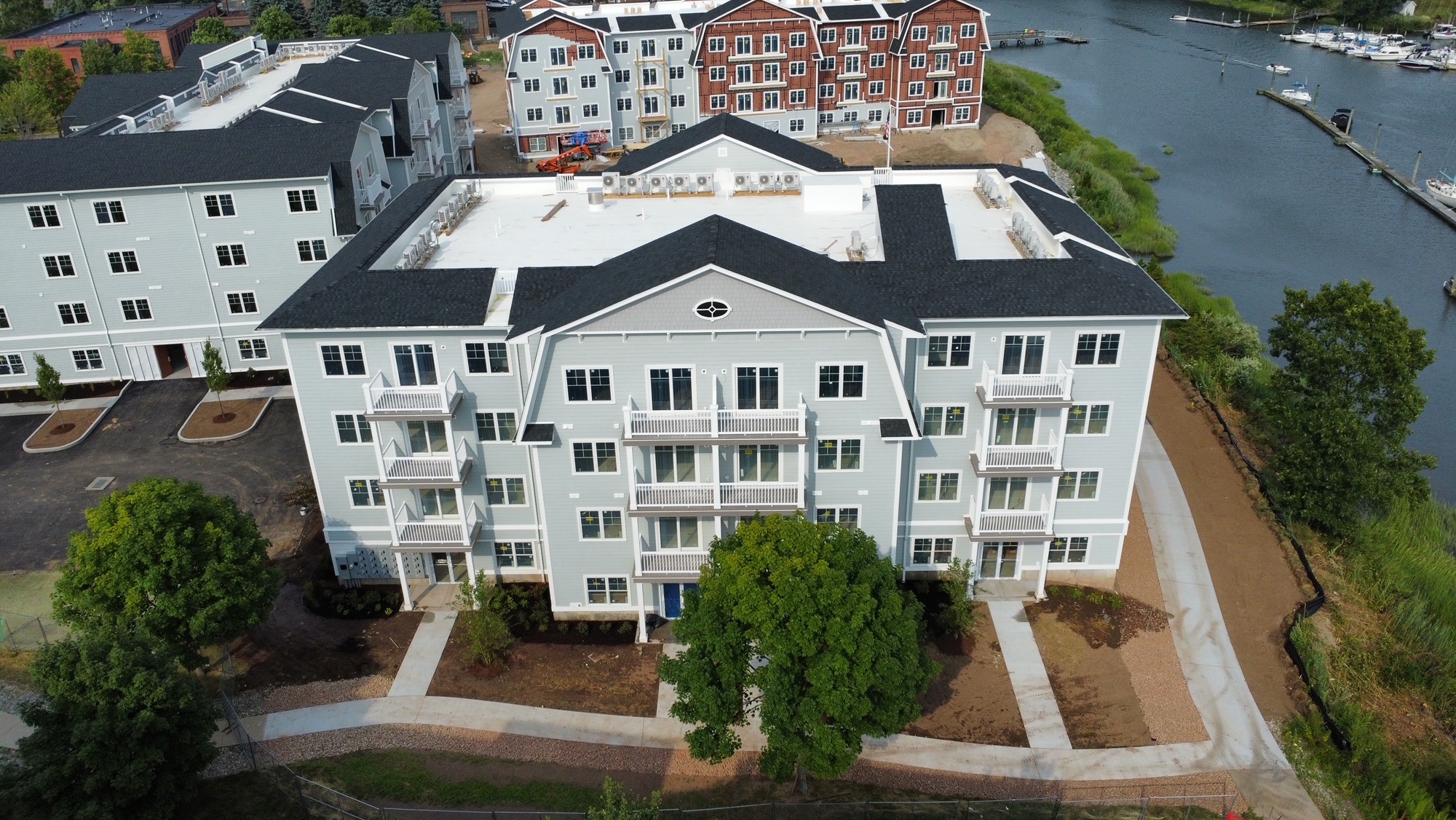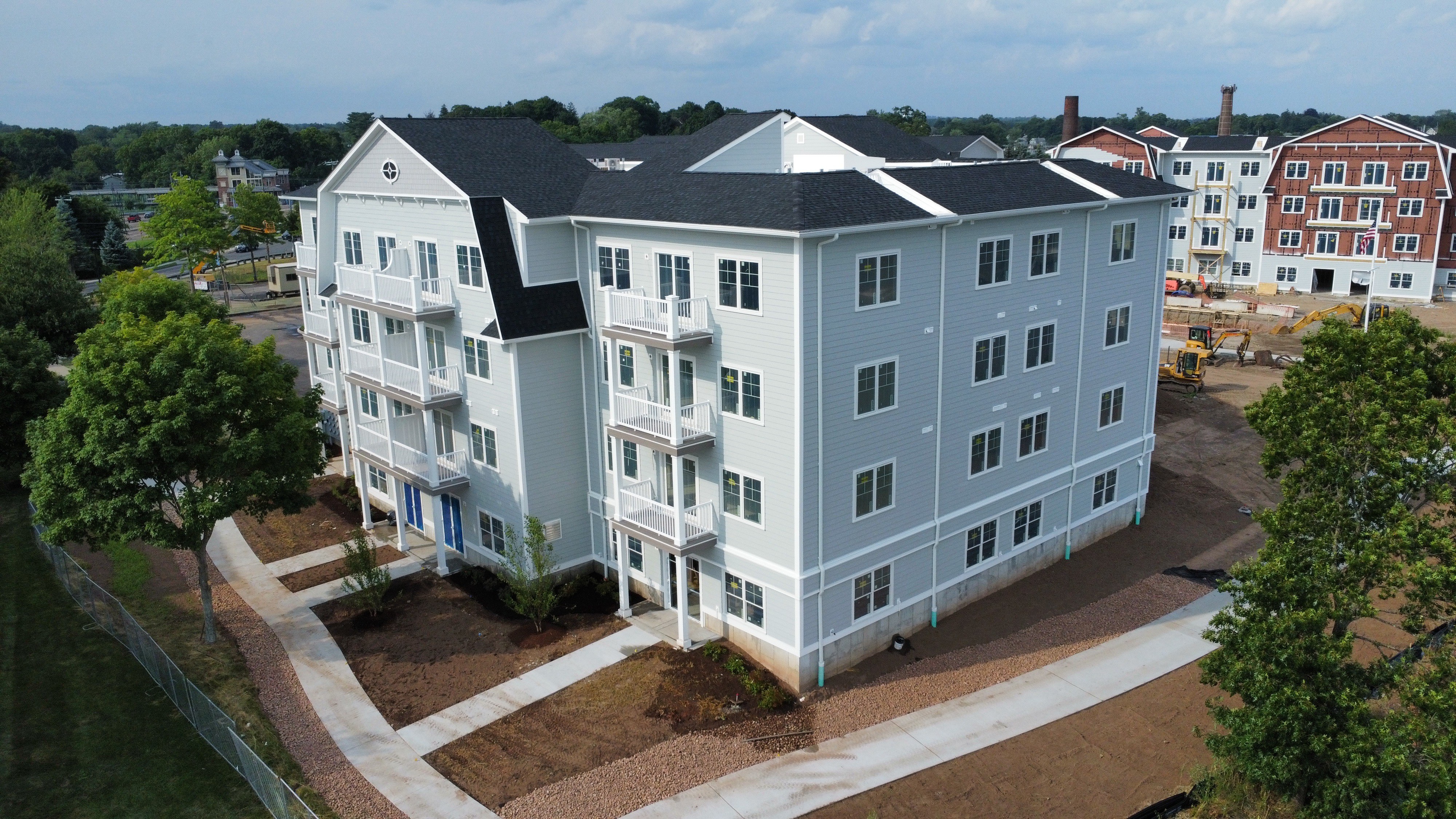
Quiet Floors, Happy Tenants: EXACOR® Sound-Dampening Underlayment for Multifamily Projects
4 Min Read November 1, 2024
From dulling heavy footsteps to mitigating the sound of conversations, floor underlayment plays a pivotal role in multifamily construction. Forward-thinking builders prioritize acoustics from the outset, selecting floor systems that enhance occupant comfort by reducing sound transmission between dwelling units. They go the extra mile during the design and construction phases, creating environments where tenants enjoy undisturbed peace and quiet.
Dan Baughman, project manager for Cherry Hill Construction, exemplified this approach in 2021 when he launched his four-story multifamily project in Branford, Connecticut. Situated on a 7-acre site along the Branford River, Mariners’ Landing includes 147 residential apartments, each designed in a Dutch Colonial Nantucket style and carefully built with a focus on acoustic performance.
“I’ve used Huber Engineered Woods’ products, including ZIP System® products, for more than 24 years,” Baughman said. “When we started pre-planning for this multifamily project, we were looking for an alternative to gypsum. I specified EXACOR panels, and it has worked great."
By opting for EXACOR® underlayment panels, Baughman ensured effective noise reduction in floor/ceilings throughout the buildings. The build, slated for completion in early 2025, capitalizes on the proven sound attenuation characteristics of high-quality magnesium oxide panels to create a quieter and more comfortable living environment for future tenants.
Read on to discover how you can approach a multifamily build like Mariners’ Landing and achieve the same benefits.
Importance of Sound-Control Underlayment in Multifamily Construction
For Cherry Hill Construction, ensuring top-notch acoustic quality in multifamily housing is non-negotiable. Having a floor assembly with adequate ratings for Sound Transmission Class (STC) and Impact Insulation Class (IIC) is essential, as the higher the rating, the more noise is reduced between units. EXACOR underlayment, engineered and rigorously tested for sound attenuation, meets — and often exceeds — these standards while simplifying installation compared to traditional methods.
“People often try to compensate by installing thick carpet padding,” Baughman said. “With EXACOR products, you don’t have to do any of that.”
With EXACOR underlayment, Baughman ensured that each unit in Mariners’ Landing surpassed expectations, minimizing noise disruptions from neighboring units and enhancing overall resident satisfaction and retention.
As an example, EXACOR UL528 assembly can achieve up to IIC 56 and STC 60[1]. Learn more about the sound ratings of this and other assemblies in the Sound and Fire Assemblies Handbook.
Achieving Sound Ratings Without Sound Mats
In evaluating construction efficiency and performance, Baughman recognized EXACOR® panels could provide a significant advantage over traditional gypsum concrete assemblies. Unlike gypsum concrete systems that involve multiple layers (subfloor, sound mat, gypsum underlayment and finished flooring), EXACOR® assemblies achieve comparable fire and sound ratings without the need for sound mats.
We’re at STC 50 right out of the box with EXACOR underlayment panels, without doing any kind of sound control mat. –Dan Baughman, project manager for Cherry Hill Construction
“I can’t say enough about the sound rating,” Baughman said. “We’re at STC 50 right out of the box with EXACOR underlayment panels, without doing any kind of sound control mat.”
STC is one part of the picture: EXACOR underlayment meets code-required IIC ratings, which measures how well a building component reduces impact noise, such as footsteps or dropped objectives, without needing a sound mat. Using EXACOR underlayment is a streamlined approach that not only simplified construction for Mariners’ Landing but also enhanced efficiency without compromising acoustic and fire safety requirements.

EXACOR Panels vs. Gypsum Concrete Underlayment
While gypsum concrete demands multiple layers and increased thickness for adequate sound insulation due to its density, EXACOR panels provide robust performance with fewer layers and less material, optimizing construction efficiency and cost-effectiveness.
“Achieving effective sound control with gypsum involves using multiple layers and adjusting thicknesses,” Baughman said. “Using EXACOR has made it easier on everybody.”
As the Mariners’ Landing project nears completion, Baughman’s decision to integrate EXACOR underlayment panels stands poised to redefine standards in acoustic comfort and construction efficiency.
“One of the biggest things I like about EXACOR is that it’s a very stable product — I can place trades on top of it,” he said. “It also holds up well against water spills, showing no signs of swelling.”
Plus, Baughman said, “It’s a really quiet floor.”
Curious about EXACOR underlayment panels and their benefits for your projects?
Get a free sample and discover its unmatched performance.

